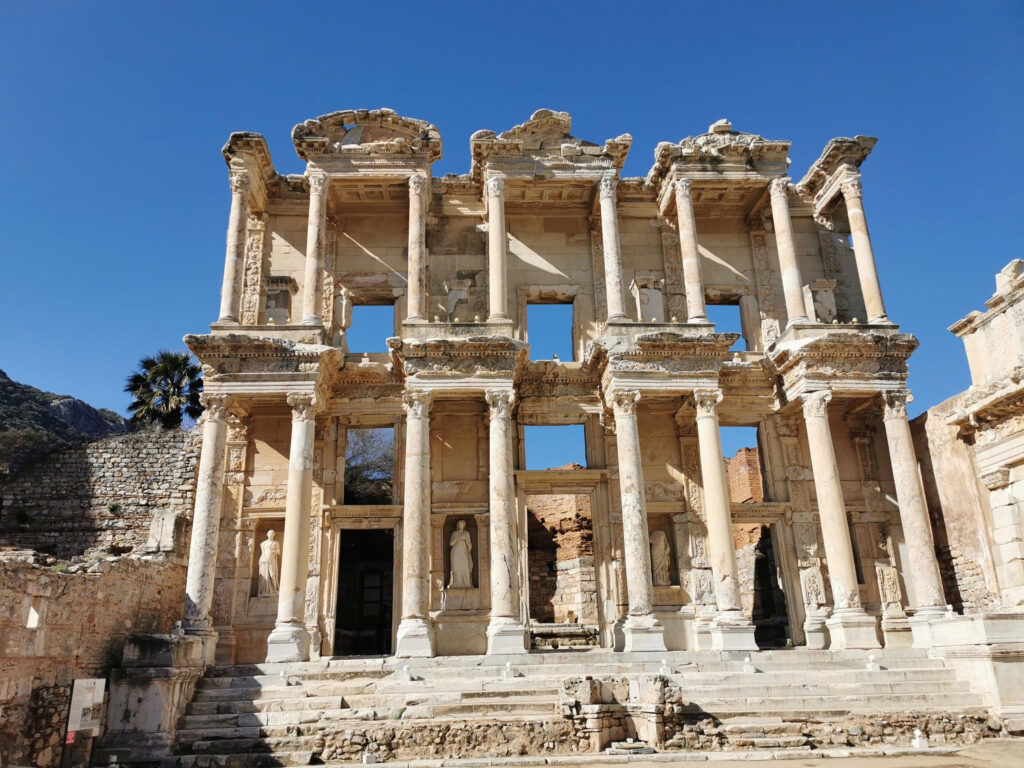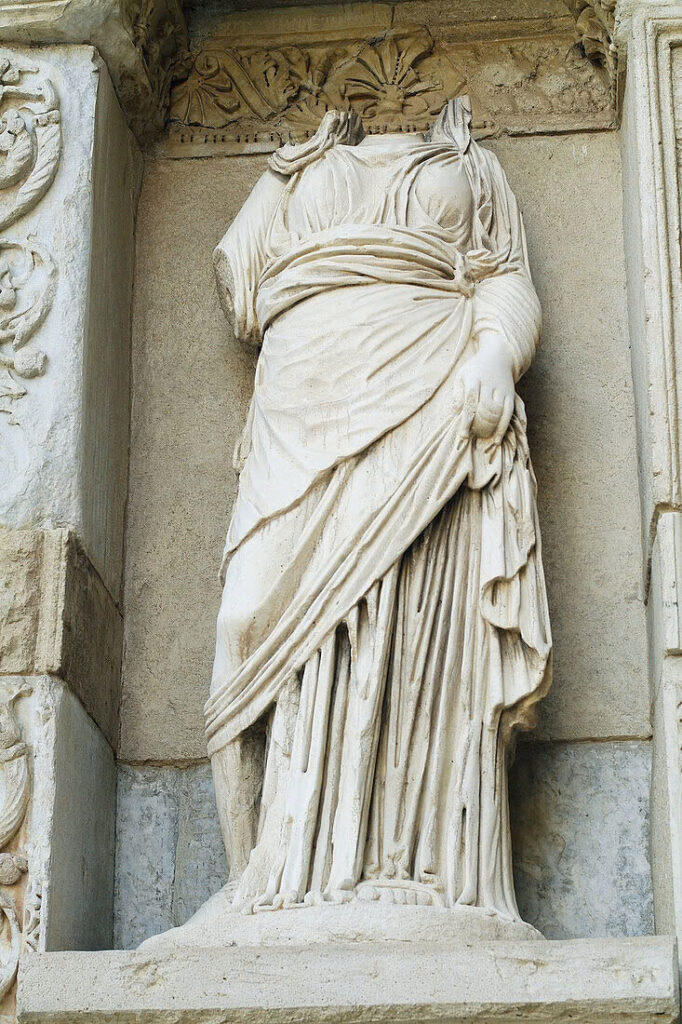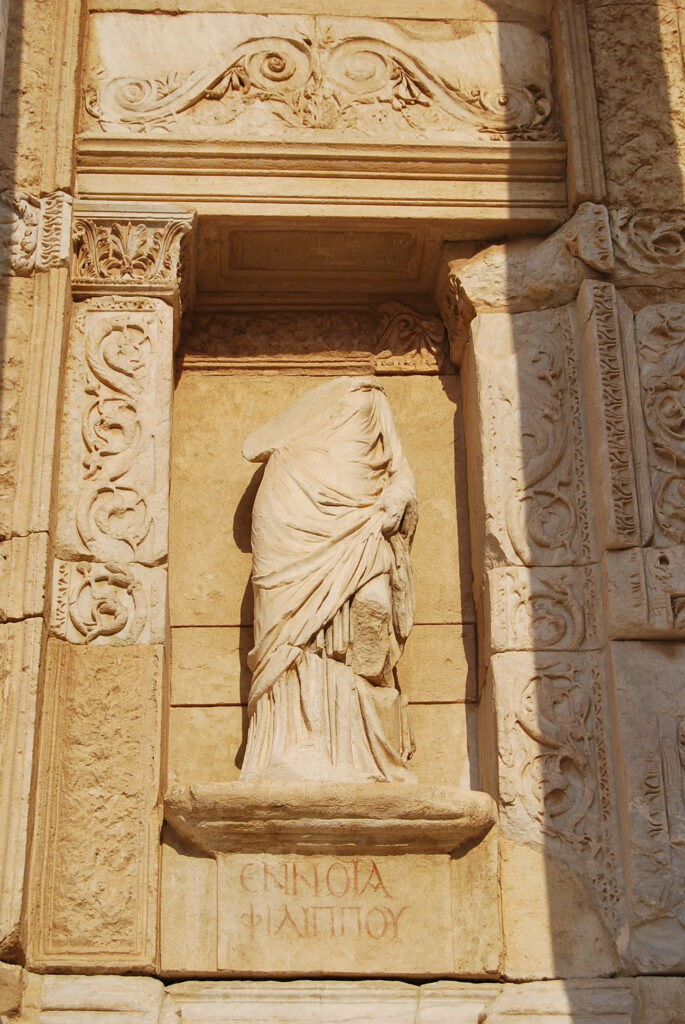The Library of Celsus stands as one of the most remarkable architectural wonders in ancient Ephesus, modern-day Türkiye. This magnificent structure, built between 110-114 AD, tells a fascinating story of Roman ingenuity, scholarly pursuit, and architectural brilliance.
The Birth of a Knowledge Haven

The library emerged from a son’s devotion to his father’s memory. Gaius Julius Aquila commissioned this grand edifice to honor his father, Tiberius Julius Celsus Polemaeanus, a distinguished governor and consul of Ephesus. Uniquely, the building served a dual purpose – housing precious knowledge above while protecting Celsus’s final resting place below in a specially designed sarcophagus.
A Treasury of Ancient Wisdom

In its golden age, the library housed an impressive collection of over 12,000 scrolls, making it the third-largest library in the Roman Empire, surpassed only by Alexandria and Pergamum. Scholars, officials, and citizens gathered here, drawn by the vast repository of knowledge within its walls.
Architectural Mastery
Innovative Design for Preservation

The library featured a cleverly designed single reading room with specialized niches. These storage spaces weren’t merely decorative – they represented Roman engineering at its finest, protecting delicate scrolls from environmental threats like moisture and heat.
The Magnificent Facade
The library’s two-story facade remains its most striking feature, showcasing exquisite Corinthian columns and detailed reliefs. The vertical arrangement of columns creates an impressive sense of height and grandeur, reflecting the building’s intellectual aspirations.
Through the Ages
Destruction and Renaissance

A devastating earthquake in 262 AD marked a turning point in the library’s history, destroying much of the structure except portions of its iconic facade. As Ephesus entered its Byzantine period, the library’s purpose evolved, though its grandeur never diminished.
Modern Restoration
The 1970s saw a remarkable revival of this ancient wonder through extensive restoration work. The reconstructed facade now stands as a testament to both ancient craftsmanship and modern preservation efforts.
The Four Virtues
The library’s facade is adorned with four statues representing essential virtues:
- Wisdom (Sophia)
- Knowledge (Episteme)
- Intelligence (Ennoia)
- Valor (Arete)




These sculptures embody the intellectual ideals of ancient Ephesus, symbolizing the qualities most valued in this center of learning and governance.
Legacy and Modern Significance
Today, the Library of Celsus ranks among Ephesus’s most photographed ruins, drawing visitors from across the globe. More than just a tourist attraction, it stands as a powerful reminder of humanity’s timeless pursuit of knowledge and the Roman civilization’s commitment to learning and architectural excellence.

The library continues to inspire awe, offering modern visitors a glimpse into an era when knowledge was celebrated and preserved in architectural masterpieces. Its enduring presence reminds us of the eternal value of wisdom and cultural heritage, bridging the centuries between ancient Roman sophistication and our contemporary world.

